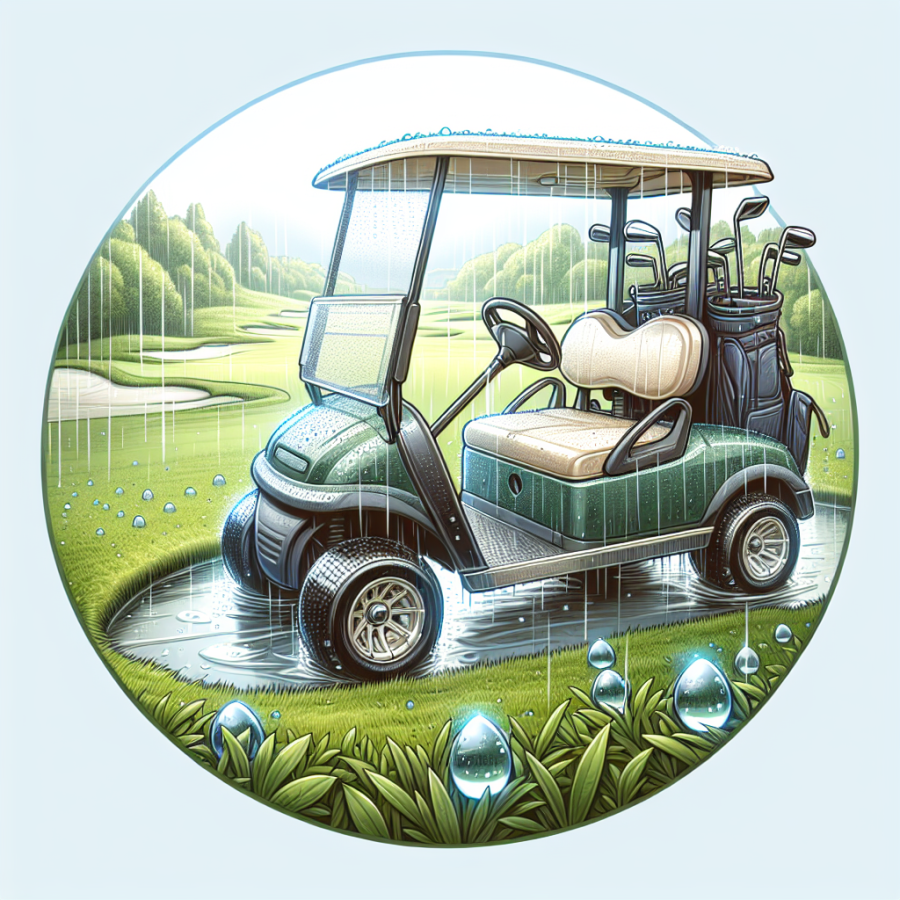Understanding the Impact of Rain and Humidity on Golf Carts
Understanding the effects of rain and humidity on golf carts is important for their maintenance, performance, and durability. While these carts are generally durable and designed to withstand various weather conditions, excessive moisture can have detrimental effects on their functionality.
Rain can have direct and indirect impacts on a golf cart. Direct impacts could include damage to the cart's electrical system. Most golf carts, especially electric ones, have complex wiring systems that are sensitive to water. In case of a heavy downpour, water can seep into the electrical systems through any exposed parts or leaks in the cart's body, causing short circuits or corrosion over time.
Additionally, persistent rain can lead to rusting of the cart's metallic parts. Key components such as the cart's frame, rims, screws, or bolts are often made from metal that can rust when exposed to high moisture levels. Rust can weaken these parts over time, thereby affecting the cart's structural integrity and performance.
Indirectly, rain can create wet and muddy conditions that can pose difficulties for golf carts. Wet terrains can reduce the traction between the cart's tires and the ground, making them prone to getting stuck or sliding. Besides, mud can stick to the different parts of the cart, making it dirty and possibly hindering its performance.
Humidity, on the other hand, poses its challenges. In areas with high humidity, condensation often forms on the cart's body and parts. Repeated exposure to humidity can lead to corrosion and eventual degradation of cart parts. This can compromise the cart's safety measures, aesthetic appeal, and overall lifespan.
Electronic components in golf carts are also at risk in high humidity. The moisture-laden air can lead to the condensation of water within the cart's electronic systems, which can then lead to electrical faults or premature component failure.
Even the cart's upholstery is negatively affected by moisture. Seat covers and other fabric parts can develop molds or mildew if not properly ventilated or dried, which can deteriorate the cart's comfort and visual appeal.
To mitigate these risks, regular cleaning and timely maintenance of golf carts is crucial. Using protective covers to shield the cart from rain or intense humidity, thorough cleaning to remove any stuck mud, regular checks on the electrical system, and keeping the cart in dry, ventilated spaces when not in use are some practices that can help manage the impacts of rain and humidity on golf carts.
Read also:
Understanding the Proper Arrangement of Golf Clubs in Your Bag
Practical Tips to Protect Your Golf Cart from Moisture Damage
Moisture damage is a common issue that afflicts golf carts, from causing technical problems to the overall decreased longevity of the vehicle. To ensure that your golf cart maintains its top condition for as long as possible, here are some practical tips that can help you protect your golf cart from moisture damage.
1. Regular Cleaning: Regular cleaning of your golf cart can aid in preventing moisture damage. Dirt and grime can trap moisture, which can lead to rust and corrosion. Wipe down your golf cart after each use and perform deep cleanings periodically. Particularly pay attention to the undercarriage and wheels, where dirt buildup is most common.
2. Use a Golf Cart Cover: One of the most effective ways to protect your golf cart from moisture is by using a cover when the cart isn't in use. This can prevent direct exposure to rainfall or dew. Covers can also protect from indirect forms of moisture like humidity and dew. Make sure that the cover you use is waterproof and of a suitable size for your golf cart.
3. Regular Maintenance and Check-ups: Routine inspection, service, and maintenance are crucial to detect early signs of moisture damage. Conduct an inspection of the battery compartment and other vital parts such as motor, brakes, and wires for signs of rust or corrosion. If unsure, it might be a good idea to have a professional mechanic look at the golf cart.
4. Garage or Shed Storage: If possible, store your golf cart in a garage or shed that offers protection from the elements. Investing in a storage shed can help prevent exposure to moisture. Make sure that the storage area also has good ventilation to prevent condensation build-up, which can cause as much damage as direct exposure to water.
5. Use Moisture Absorbers: You can find moisture absorbers or desiccants at many retailers and they can be very effective in preventing moisture damage. Placing these inside your golf cart when it's not in use can absorb excess moisture, keeping the interior of your cart dry.
6. Anti-Rust and Waterproofing Treatments: Consider using anti-rust sprays and waterproofing materials on the metallic parts and undercarriage of your golf cart. Such treatments can create a protective layer between the golf cart and moisture, reducing the risk of rust and corrosion.
7. Proper Battery Care: The battery compartment is a common place for moisture damage in golf carts. Always make sure that the battery is clean and securely covered.




